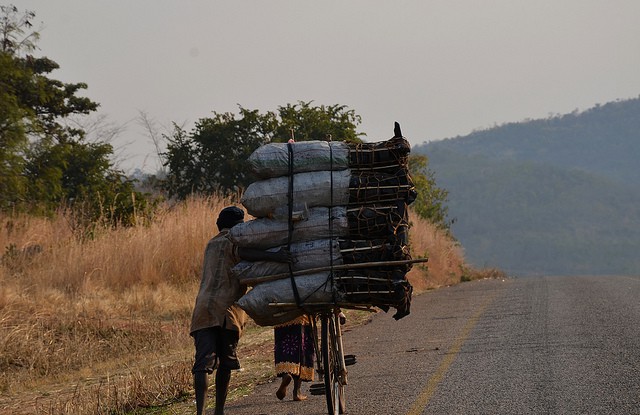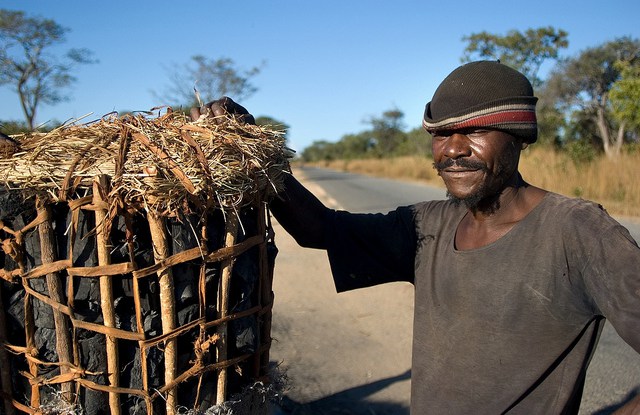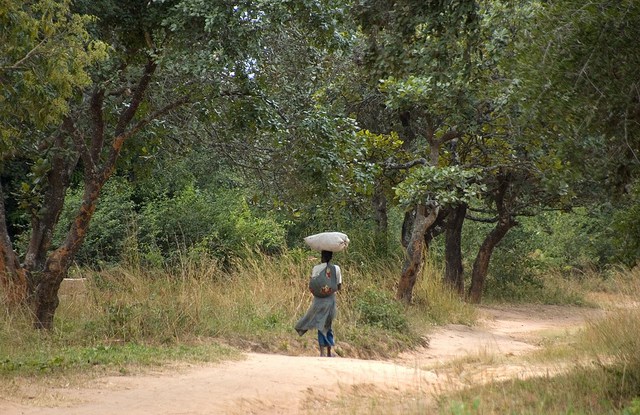
Charcoal and timber make significant contributions to the livelihoods of rural households in Zambia — but these forest-based resources do not always lead to deforestation, contrary to conventional wisdom, research indicates. A recent study shows that in some areas of the country, locally managed charcoal production systems exist, and recommends replicating them elsewhere.
The study by the Center for International Forestry Research (CIFOR), titled “Dynamics of the charcoal and indigenous timber trade in Zambia,” examined three provinces in eastern Zambia, where the charcoal and timber trade have contributed to forest loss.
While the charcoal and timber trades are consistently cited as major contributors to Zambia’s 0.3 percent annual deforestation rate, the report did highlight that the largely undocumented charcoal and timber trade make meaningful contributions to livelihoods and national income, citing poverty and lack of employment as major factors behind charcoal production.
These factors are exacerbated by urbanization and a changing climate.
Changing weather patterns are affecting crop production in many communities throughout the country. For example, in Zambia, November is usually a rainy month when farmers finalize preparations for planting in their fields. But last November, the Nyimba district of eastern Zambia saw an abnormally dry period of unrelenting heat in place of the rains. Agricultural hardships only increase the pressure to find incomes elsewhere, and in some cases, local people are turning ever more toward charcoal production as a means for income.
And there is steady demand: Zambia’s growing urban population increasingly relies on charcoal as an energy source.
This has added pressure on forest resources, in turn leading to forest degradation and loss of tree species preferred by producers, forcing them to resort to lesser-used and food-bearing trees.
Zuwalinyenga in Nyimba District, eastern Zambia, is one community that has seen the effects firsthand. For decades, charcoal production has been the main source of livelihood for the local people. However, due to unrelenting pressure on the forests for charcoal, good charcoal-producing trees have become scarce, forcing local producers to scout for them from villages in the neighboring chiefdom.
These forests are getting depleted of good trees that used to give us very good charcoal
In response, the Zambian Forest Department has shifted its gaze and is clamping down on illegal charcoal and timber traders through increased patrols.
With urban populations’ demand for charcoal and timber being one of the major catalysts of deforestation levels, the Forest Department has also shifted its focus and tracking illegal traders from rural communities to urban areas.
“What we have observed is that most of the charcoal is coming from outskirts of [Lusaka, the capital] … meaning that places around Lusaka no longer have trees large enough to give good charcoal,” said Ignatius Makumba, director of the Forest Department.
‘THESE FORESTS ARE GETTING DEPLETED’
The need to understand the underlying factors leading to the overdependence on forest resources as a source of income in communities such as Zuwalinyenga continue to raise critical research questions: Do these communities observe changes in status of their forests? Can they find alternative livelihoods with lesser impact on forest resources?
Many would like to but cannot. Take Miriam Ngulube, 67, a mother of 9 children and a charcoal trader for many years.
“Charcoal business has been the source of livelihoods for me and the rest of the people in this village. I am able to feed and educate my children through this business,” she said.
Miriam is aware of the impact that the charcoal trade has had on the environment and doesn’t hide her desire to venture in a different trade.
“Our trees can no longer produce the same type of stems that we used to get. These forests are getting depleted of good trees that used to give us very good charcoal. We now have to get charcoal for trade from Ndake village,” 28 kilometers away, she said.
RECOMMENDATIONS
The study highlighted a broad array of state and non-state actors dominated by charcoal producers, government service providers, traders, transporters, retailers and vendors. In the past, women have been known to be retailers and petty traders in the value chain. However, this study established that women were becoming charcoal producers — like Miriam — challenging the assertion that charcoal production is a male-dominated activity.
Miriam’s experience aside, to change local perceptions about the need to conserve forest resources will likely require further efforts. To this end, the Zambian government has since called for a national consultative meeting to address issues around charcoal production.
The CIFOR study points to some recommendations for fostering a sustainable charcoal and timber trade.
Among them, the traditional rules that once provided the basis for district-level by-laws need to be formalized and become the foundation of local natural resource management. Forest restoration efforts and sustainable charcoal production schemes should be developed; special support should be given to women producers; and communities should develop their own rules for managing forests.
With respect to timber production, the study suggests altering the way that sawyers are licensed, and using remote-sensing data more actively to determine vegetation change at selected logging sites.
For more information about the topics of this research, contact Davison Gumbo at d.gumbo@cgiar.org.
We want you to share Forests News content, which is licensed under Creative Commons Attribution-NonCommercial-ShareAlike 4.0 International (CC BY-NC-SA 4.0). This means you are free to redistribute our material for non-commercial purposes. All we ask is that you give Forests News appropriate credit and link to the original Forests News content, indicate if changes were made, and distribute your contributions under the same Creative Commons license. You must notify Forests News if you repost, reprint or reuse our materials by contacting forestsnews@cifor-icraf.org.

